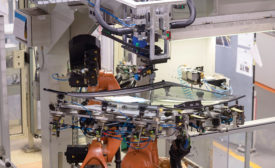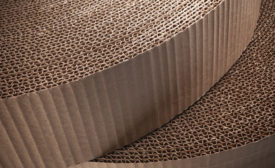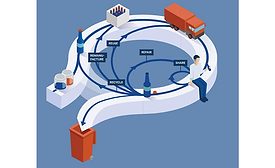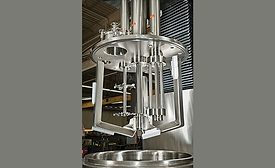Featured on Home Page
Advanced sealants and adhesives in vehicle assembly effectively and safely address key applications that have traditionally employed mechanical fasteners while adding design freedom to today's modern vehicles.
Read More
Using Foam Sealants for Pest Prevention
Pest & Rodent Awareness Week is coming up. How can expanding polyurethane foams help seal building envelopes against unwanted visitors?
September 24, 2020
From the Editor
Making it Easy to Be Green in the Adhesives and Sealants Industry
Our annual sustainability issue details products and technologies that make it easier for adhesives and sealants to be green.
September 18, 2020
Market Trends
Pine Chemicals Benefit from Uptake of Bio-Based Materials
The coatings and adhesives sub-segment accounts for the largest share of the global pine chemicals market, at over 30%.
September 15, 2020
What Was, What’s New, and What’s Next in Corrugating Adhesives
Sustainability and recyclability continue to be critical for adhesives in packaging applications, as does the need to continually improve efficiency and reduce cost.
September 11, 2020
Marine Applications for Adhesives and Sealants
Today’s marine adhesives and sealants provide strong lightweight bonds to structural components and watertight sealing between substrates.
September 8, 2020
Strategic Solutions
Collaboration and Innovation for Sustainable Packaging
Ink, adhesive, paperboard, film, and other material suppliers need to understand relevant certifications and processes in order to adhere to recycling or composting standards.
September 4, 2020
Mixing Sustainability and Innovation
As continued research and development races to meet the growing appetite for sustainable adhesives, manufacturers must also push innovations in processing that reduce both waste and energy consumption.
September 1, 2020
Ask Dr. Dave
Surfactants and Sustainability
We hear that some surfactants have been banned. Is it a problem in the adhesives and sealants that we manufacture?
August 28, 2020
Exploring Sausage Packages for Commercial and DIY Mastics
Many mastic users are either unaware that the sausage package option is available or they find it is not available in the brand they prefer.
August 25, 2020
Keep the info flowing with our eNewsletters!
Get the latest industry updates tailored your way.
JOIN TODAY!Copyright ©2024. All Rights Reserved BNP Media.
Design, CMS, Hosting & Web Development :: ePublishing




















